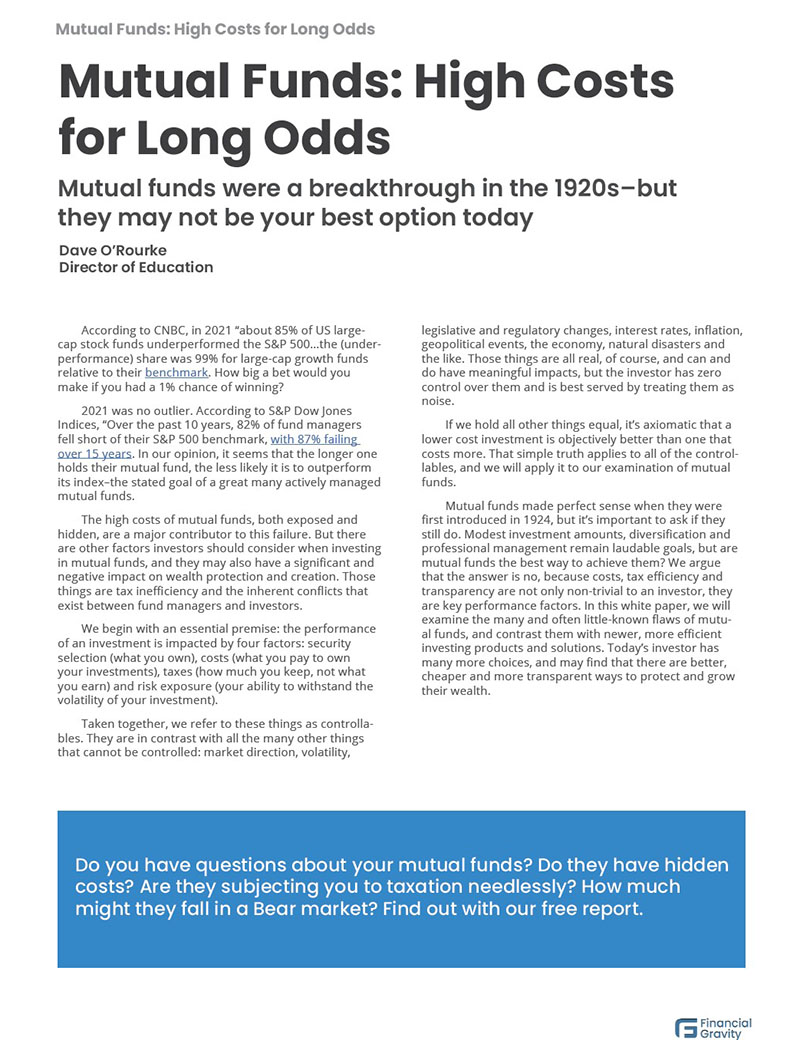It is no coincidence that the wealthiest families in the world overwhelmingly choose the family office model to steward their financial lives. Why? Because it prioritizes what truly matters: maximizing long-term compounding through relentless portfolio efficiency, not gambling on market-beating performance. Family offices don’t focus on flashy quarterly returns—they focus on sustaining wealth across generations.
By emphasizing tax efficiency, disciplined risk management, and cost-effective implementation, family offices extract every basis point of value that markets allow. They don’t chase benchmarks; they build systems for durable advantage. This philosophy of excellence—of pursuing precision over prediction—is the foundation of what we call Advisor’s Alpha.
In the world of wealth management, performance is often reduced to a number: a benchmark-beating return, an annual growth rate, a quarterly report that outpaces expectations. But seasoned investors and sophisticated families know that true long-term success is not about beating the market in any single period; it’s about delivering lasting value in ways that transcend portfolio performance.
This is where Advisor’s Alpha comes in. Coined by Vanguard and embraced by thought leaders across the advisory profession, Advisor’s Alpha refers to the value an advisor adds above and beyond market returns. It’s a combination of behavioral coaching, strategic planning, tax efficiency, risk management, and cost-conscious implementation that can significantly improve a client’s real-world outcomes.
Cost Controls: The First and Easiest Alpha
Controlling investment costs is one of the simplest and most effective ways to boost net returns. From employing low-cost, low-turnover managed portfolios to leveraging passive strategies where appropriate, advisors can help clients avoid unnecessary expense drag. A 1% reduction in fees compounded over a decade can make a five- or six-figure difference.
And yet, many investors unknowingly pay far more than the stated expense ratio. Actively managed mutual funds, for example, often carry hidden trading costs, which research from Morningstar estimates can add an additional 0.5% to 1.5% per year in performance drag due to turnover, spreads, and market impact.
When combined with management fees that average around 0.66% for U.S. equity funds (according to ICI), total costs can easily approach or exceed 2% annually, without delivering consistent outperformance.
By contrast, index funds and institutional share classes often carry total fees well under 0.10%, with minimal trading friction. The difference is not trivial. Over a 25-year horizon, a portfolio saving 1.5% annually in fees could generate hundreds of thousands of dollars more in cumulative wealth.
Tax Efficiency: Alpha the IRS Won’t Tell You About
From tax-loss harvesting to asset location and smart withdrawal sequencing, family offices have a range of tools to help clients keep more of what they earn. Integrating tax efficiency into portfolio construction and distribution planning is a defining feature of high-impact advisory work.
Consider this: Vanguard estimates that tax-efficient investing strategies can add up to 1.1% annually in additional return, without taking on more risk. This includes harvesting losses to offset gains, strategically placing income-generating assets in tax-advantaged accounts, and planning withdrawal sequences that minimize taxable income. According to Morningstar, tax-aware investors could retain tens of thousands of dollars more over time, especially in taxable portfolios.
By systematically reducing the drag of taxes, advisors help clients achieve stronger after-tax returns, where it truly matters. After all, it’s not what you earn, but what you keep.
Diversification: The Quiet Engine of Stability
True diversification is not about owning many things—it’s about owning the right mix of assets that behave differently in varying market conditions. An advisor who builds a portfolio with thoughtful diversification across asset classes, sectors, and strategies reduces downside risk while preserving upside potential.
Modern portfolio theory shows that diversification can reduce portfolio volatility without sacrificing expected return. For example, mixing diversified bond portfolios and fixed indexed annuities can dampen drawdowns and help smooth the ride for investors. Morningstar data indicates that diversified portfolios experienced 20–30% lower volatility during the 2008 financial crisis compared to equity-concentrated portfolios.
Effective diversification also mitigates behavioral risk. Clients are more likely to stay the course when their portfolio doesn’t rise and fall with a single market segment. By engineering portfolios for resilience, advisors help protect both the financial plan and the client’s confidence.
Risk Exposure Management: Aligning Portfolios With Life
Most portfolios are rebalanced to arbitrary asset allocations. But advisors who rebalance to risk exposure help clients maintain consistent volatility and better align with their personal risk tolerance and time horizon. This helps minimize emotional decision-making and portfolio drift. Importantly, risk-aware advisors also focus on avoiding uncompensated risks—those that add volatility without a meaningful increase in expected return.
Arbitrary and imprecise terms like “moderately aggressive” can set a trap for investors, whose understanding of the term may differ from that of the portfolio manager. Some industry professionals consider a conservative portfolio to have 50% invested in stocks, while others may set stock exposure at 20%. The difference in outcome can be enormous over 20 years.
Investors are better served by setting a maximum downside loss percentage, which can be as precise as a single digit, say 33% or 25%. Portfolios can be engineered around that specific number, using 100 years of actual market data. Educated investors, who know that markets typically recover quickly, are better equipped to handle the normal behavior of equity markets: volatility.
Control the Controllable: Avoiding the Performance Mirage
In the pursuit of outperforming the market, many investors fall into the trap of chasing top-performing funds or star managers—often to their detriment. History shows that yesterday’s winners rarely sustain their edge, and high turnover can lead to poor tax outcomes and inconsistent returns. It’s a classic case of “live by the sword, die by the sword.” When portfolios are built around aggressive attempts at alpha, they often suffer from higher costs, higher volatility, and lower long-term reliability.
Not all active managers deliver value, and past performance is no guarantee of future results. Advisor’s Alpha includes rigorous, repeatable due diligence—evaluating cost, philosophy, transparency, and consistency. It’s not about chasing alpha, but constructing and managing portfolios to deliver persistent value.
Extensive research supports the difficulty of consistently outperforming the market through active management. According to the SPIVA U.S. Scorecard, nearly 79% of large-cap mutual fund managers underperformed the S&P 500 over a 5-year period ending in 2022. Over a 10-year horizon, that number climbs to more than 85%. The odds of selecting a consistently outperforming manager decrease even further when factoring in taxes, fees, and the challenges of market timing.
Underperformance is not just a missed opportunity—it has a compounding effect. A portfolio that trails its benchmark by even 1% annually can result in a shortfall of hundreds of thousands of dollars over a multi-decade horizon. When evaluating managers, advisors must ask not only “What have you done for me lately?” but also “Can this performance be repeated, and at what cost?”
Behavioral Coaching: The Most Powerful Alpha of All
Family office advisors add tremendous value by helping clients stay disciplined during periods of volatility. Research consistently shows that emotional decisions are the enemy of long-term wealth. A calm, proactive advisor can save clients from panic selling and performance chasing, preserving long-term compounding.
DALBAR’s Quantitative Analysis of Investor Behavior consistently shows that the average equity mutual fund investor earns significantly less than the market due to poor timing decisions. Over a 20-year period ending in 2022, the S&P 500 returned 9.65% annually, while the average investor earned only 6.81%—a gap of nearly 3% per year, driven largely by emotional behavior.
By serving as a behavioral anchor, advisors help close that gap. Encouraging clients to stick to their financial plan during turbulent times—rather than react to headlines—can preserve wealth and improve long-term outcomes more than any product or strategy.
The value of staying invested is no trivial thing. $100,000 invested at 6.81% for 20 years will grow to $373,455, but at 9.65%, it grows to $631,208.
Planning Integration: Bringing It All Together
True alpha is realized when all components of wealth—investments, tax strategy, estate planning, insurance, philanthropy—work in harmony. Advisors who act as integrators and quarterbacks drive more efficient, purpose-aligned financial outcomes for clients and families. More than anything else, this one thing explains the success of family offices.
Research from the CFA Institute and Vanguard shows that coordinated planning can add up to 1.5-2.0% in net benefit annually, especially when it includes efficient charitable giving, insurance optimization, and estate strategies like Grantor Retained Annuity Trusts or Intentionally Defective Grantor Trusts. The benefits grow exponentially when integrated across generations.
Clients don’t just want investment managers; they want holistic advisors who align financial decisions with family values and long-term purpose. When everything works together, clients experience not just better outcomes, but deeper peace of mind.
Putting It Into Practice
Advisor’s Alpha is not a one-time event—it’s a repeatable, measurable discipline. At our firm, we believe every client deserves the white-glove guidance and integration previously reserved for the ultra-wealthy. That’s why we operate with a multi-family office mindset for all of our clients, combining high-touch advice with systematized processes and modern tools.
By focusing on these areas of outperformance, we help families build resilient portfolios, reduce stress, and increase peace of mind. In an uncertain world, Advisor’s Alpha delivers confidence, clarity, and control.If you’re wondering how your portfolio stacks up in terms of costs, tax efficiency, risk exposure and overall diversification, we’re happy to provide you with a complimentary Taxes First, Then Math Analysis.


